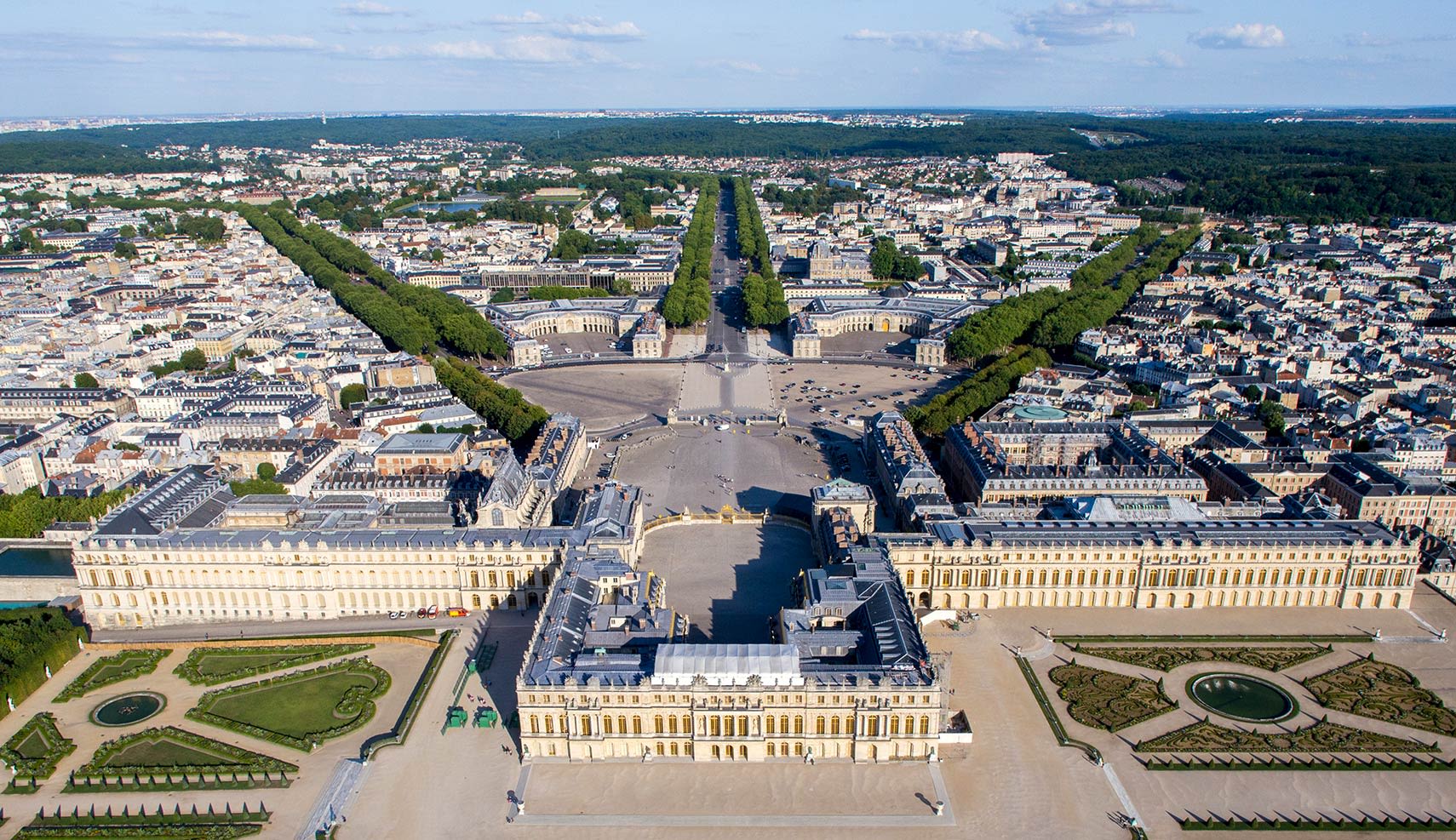Preservation and Conservation of Historical Sites
How multi-disciplinary factors (economic, environment friendly and urban planning, law and regional policy) play important roles in historical buildings preservation in Paris?
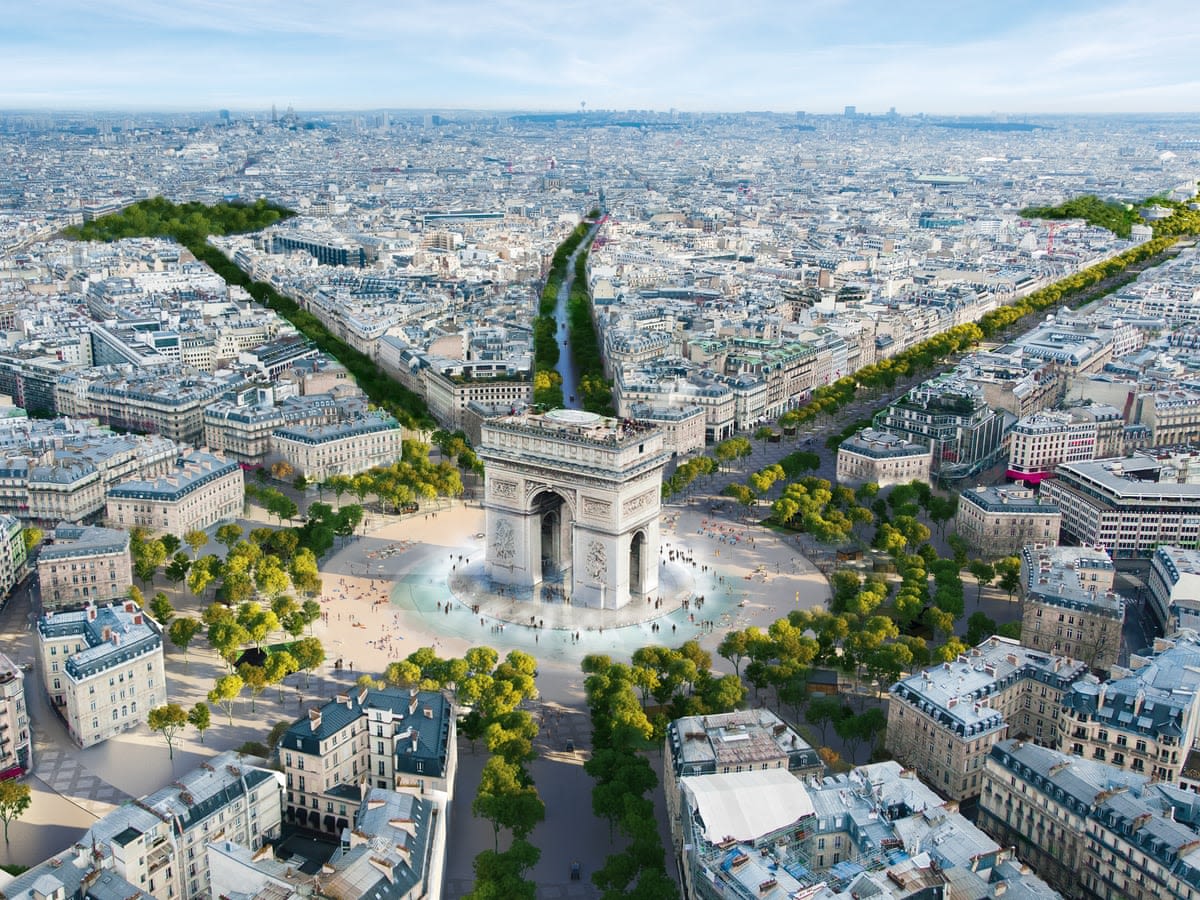
Paris is a city of romance because it has lots of historical buildings and architecture.The profound history of France led to numerous historical sites shown in the documentary. From the Greek colonies to France loyalty, Napoleon Bonaparte, all the way to the French revolution, and World War two. Numerous historical buildings are preserved today and those buildings have become well-known around the world.
Several Reasons Caused Old Sites Destruction
Unfortunately, many of the historical buildings and valuable sites are destroyed not only in France but also all around the world for multiple reasons.
The most common reason until today is lack of proper protection. For example, the fire at Notre Dame of Paris in 2019.
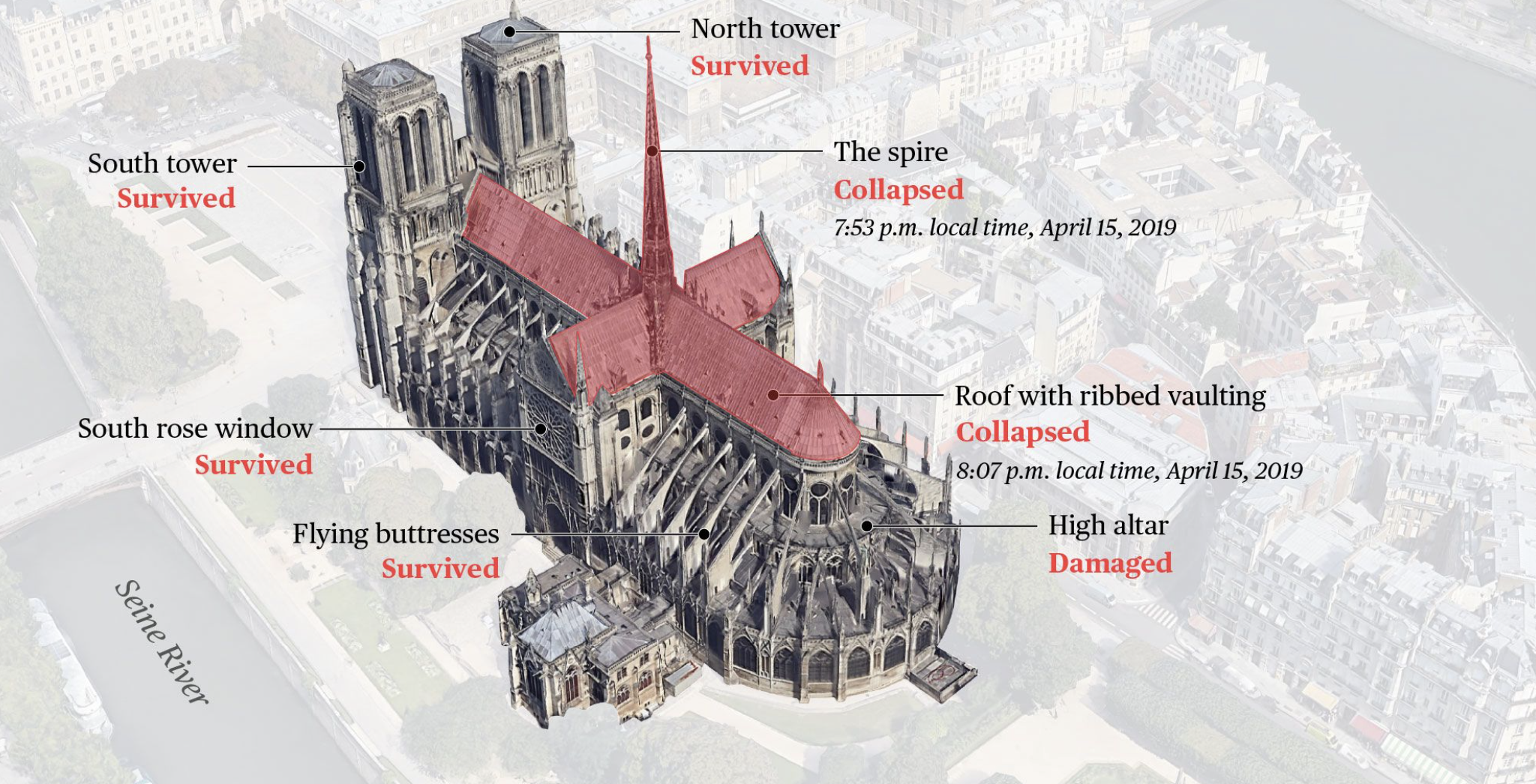
Figure 4
Figure 4
According to the NBC news reports, the spire and the roof with ribbed vaulting has collapsed in the fire. The entire wooden structure makes the fire spread quickly. (Wu&Muccari, 2019)
From the picture, we can see that beautiful and treasurable window have been totally destroyed. However, this accident was just due to lack of proper care about the electricity system.
The second cause is due to natural disasters, like earthquakes, floods, and even climate change. For instance, Italy, Pompeii, which was an ancient city founded around 6-7 B.C, was ruined by the volcano eruption in 79 A.D.
The third reason is the war and ethnic differences. During world war two, many landmark buildings were destroyed in Europe. For example, Rue de Bayeux Caen in France was heavily damaged by bombing.
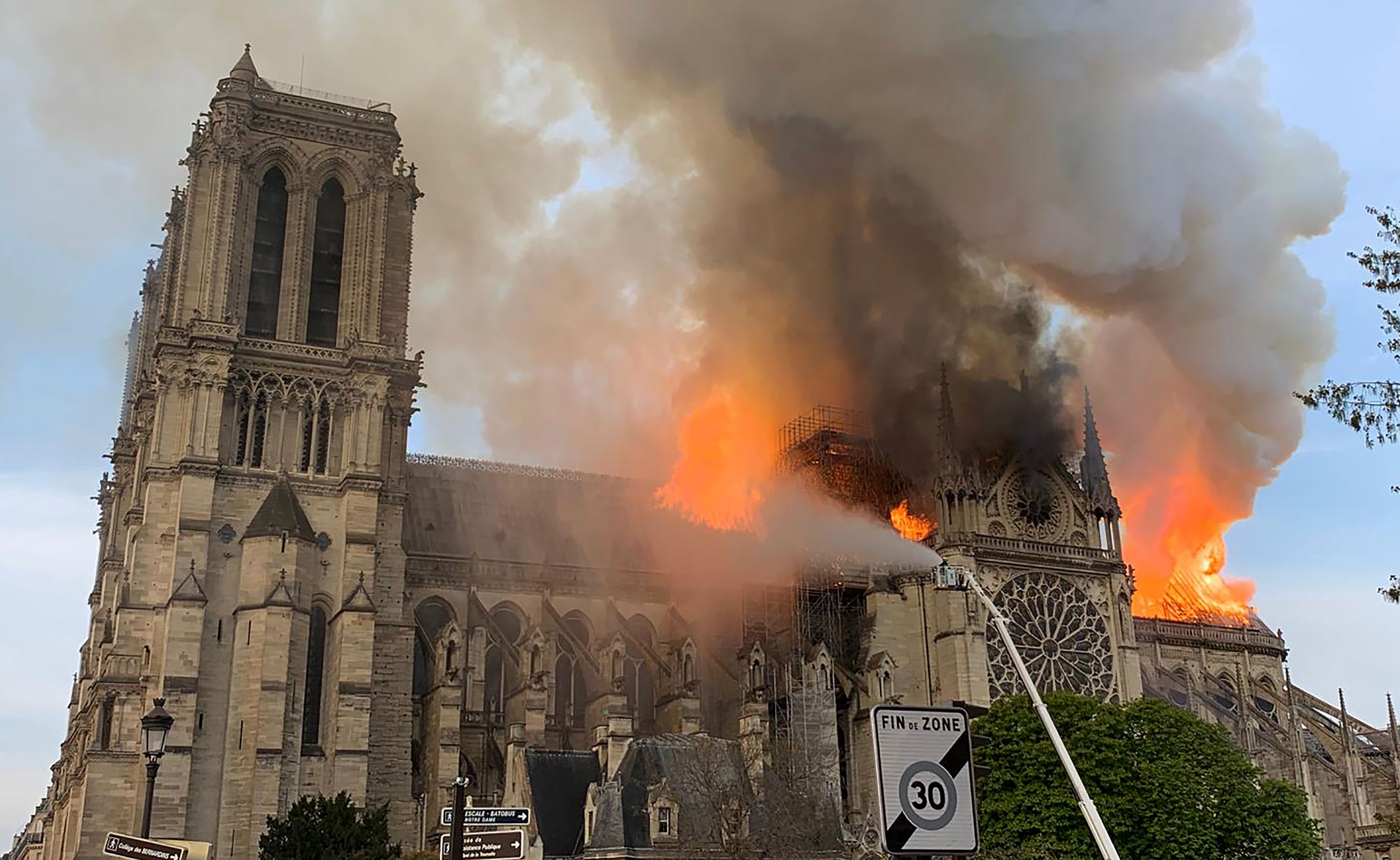
figure 1
figure 1

figure 2
figure 2
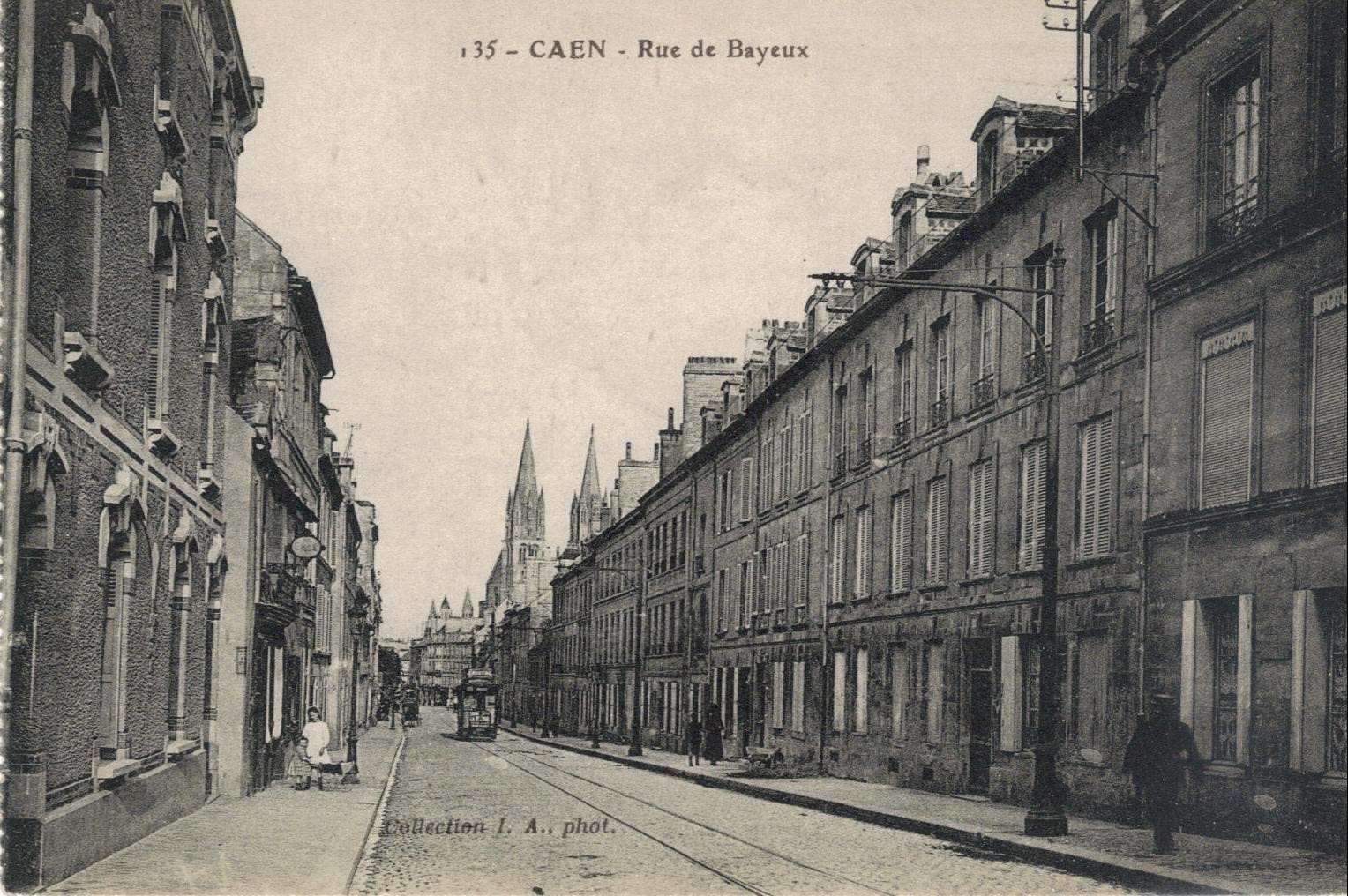
figure 3
figure 3
The Value of Historical Buildings
All historical buildings and sites are a gem of humanity. Our ancestors have created historical buildings showing culture at that period of time. Some of the buildings or sculptures are produced through the creators' lifetime. Thousands of people were sacrificed in the building of the huge sites.
- Historical values
Historical buildings and sites are the live documentation of a specific historical period or historical events. They can help the historians and archeologists to get first hand information to come up with a revolutionary theory or confirm what the historical document tells about their culture.
For example, the Notre Dame de Paris witnesses the entire history of France from a feudal society to France revolution all the way to War World two and even today. It is the historical lecturer to the whole human race. The archeologists can detect what materials have been used in history. Our ancestors’ thoughts have been described by the statues, paintings, and some documents preserved in the Notre Dame of Paris.

made by Zhanchao Yang
made by Zhanchao Yang
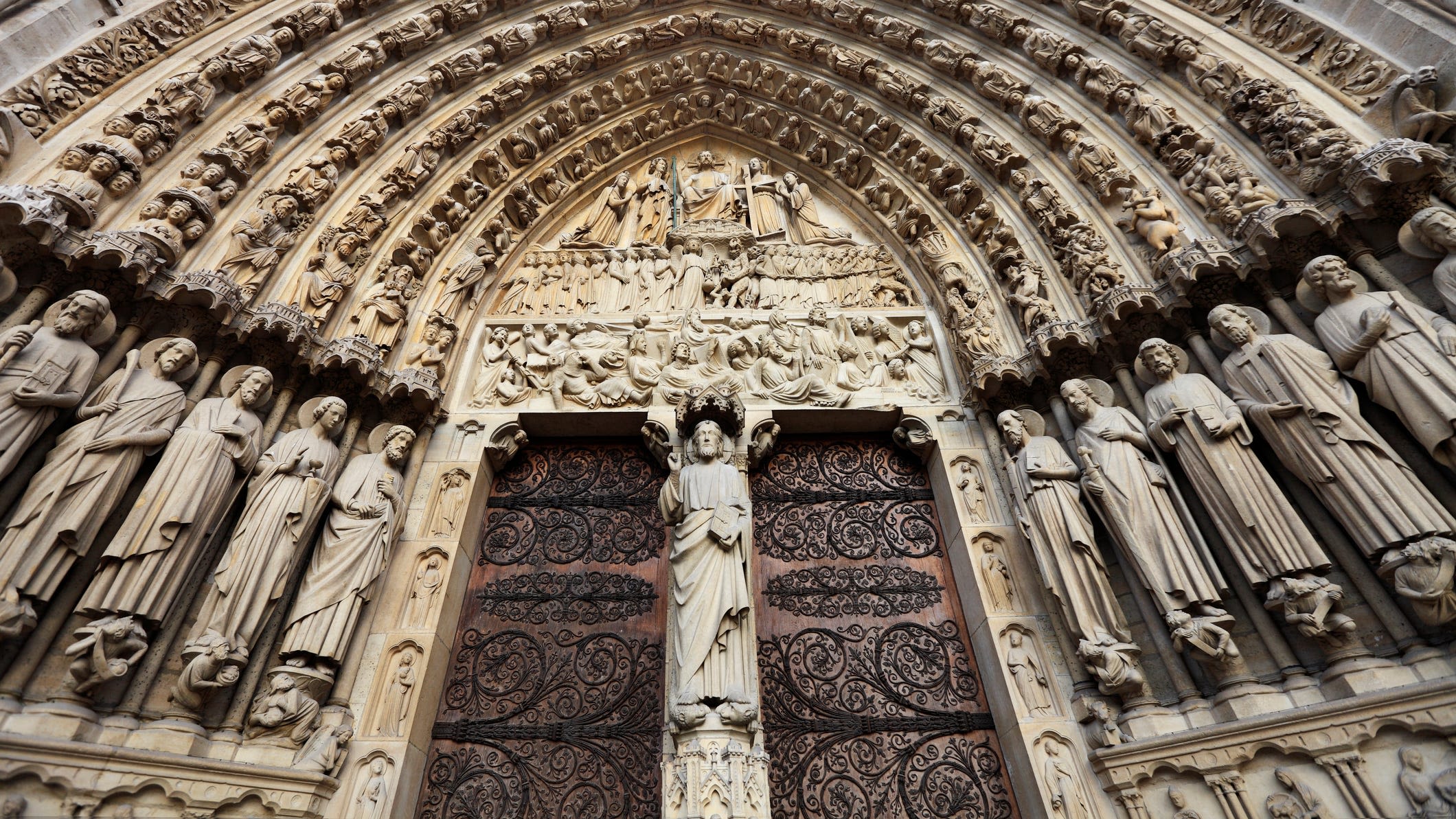
figure 5
figure 5
- Aesthetics value and Architecture value
As the picture shows, Notre Dame has thousands of statues. It represents the highest sculpture technology after the Renaissance and can be used to as an aesthetic model to represent its exact period of time.
The cathedral’s well known stained-glass rose windows partially appeared to have been spared by the inferno. "The 13th-century South Rose Window, created in 1260 and offered by King St. Louis, spans roughly 33 feet across and symbolizes Jesus sits in Heaven, "besieged by all those who have been his witnesses on Earth," according to the cathedral’s website. "(Wu& Muccari, 2019)
Notre Dame in Paris is an impressive structure. "Not only is it physically large – the 11th largest cathedral in the world to be exact, but it is still one of the world’s most persistent and resistant buildings. "(Wu & Muccari, 2019) The church itself was built mainly from limestone, wood, iron, and lead, which make the building stable.

figure 6
figure 6
Cultural heritage brings a substantial contribution to economic growth and job creation. An important part of the cultural and creative industries provide jobs for 8.5 million people in the EU and contribute 4.5% to Europe's GDP.
Organization for Economic Co-operation and Development (OECD) report shows that 40% of worldwide international tourism has a cultural dimension. Cultural heritage is also an important resource for sustainable development and societal cohesion allowing people to tour the buildings again. (European Commission, 2011) There are increasing needs for tour guides, engineers, and ticket sellers in nowadays society.
- Religion value
Notre Dame is one of the most famous churches in France. Its profound religious value seals in French people's minds. It's have a unique attraction to people prey there.

In this Capstone project, I want to explain how multi-disciplinary factors (economy, environment planning, urban planning, law, regional policy, and media) play significant roles in historic building preservation.
Economic factors

Economic factors are of paramount importance in protecting historical buildings.
The budget provided by the government laid the basis of economic factors for the historic buildings and sites preservation. In France, the budgets come from the city, region, nation, and the EU government. This budget will be used to do regular operating and maintenance (O&M), rebuilding and renovation fees, expert and workers wages, and to develop the new technology to facilitate the cultural spreading. According to the European Commission report published in August 2017, it suggests that “In the 2007-2013 period, out of a total of €347 billion for cohesion policy, the European Regional Development Fund allocated €3.2 billion for the protection and preservation of cultural heritage, €2.2 billion for the development of cultural infrastructure and €553 million for cultural services, which also benefited cultural heritage.” During the period of 2014-2020, the total budget is €325 billion (EU, 2017). On September 22nd, 2021, the cultural minister of France announced the new budget proposal for 2022, which will be voted on by the parliament. If it was approved by the French congress, “The Heritage program will reach €1,019 million, an increase of €7.1 million, or +0.7%.” (French cultural minister, 2021)

figure 7
figure 7
Although the money seems plentiful and increased annually, the above picture shows, millions of historical sites need to be renovated and preserved, especially in mid-Europe, Italy, and even France. Besides, the ecosystem services supplied by the historical buildings and cultural heritage are estimated at 200-300 billion euros per year in Europe. From the economic benefits, The government definitely needs to increase the budget of preservation of these sites in order to earn more money in the long term and in a sustainable way.
Meanwhile, unexpected events always happen all around the world, like financial crises and natural disasters. According to the 2013 European Investment bank report, the government likes to cut the cultural part budgets to do some emergency activities. For instance, during the covid-19 pandemic, the EU needed to use more budget to support healthcare, compensate citizens, and reactivate the economy. Sometimes, the other budgets occupy the budget for preserving the historical buildings. In this way, the budgets of the government are always deficient.
Starting in 2002, the European Union started to set EU Prize for Cultural Heritage. The awards are for the people or organizations which promote the preservation of the cultural heritage into practice or enhance the preservation methods. It facilitates cultural communication in the whole of Europe, increases people's appreciation and awareness of the cultural heritage, and encourages the public to participate in preservation. The winner of this award will get 10,000 euros. This honor is still available annually until today.(Europa Nostra,n.d.)

figure 8
figure 8
The donation will be the most efficient way to supplement the budget gaps. Numerous organizations and people are willing to donate money to preserve the buildings. 10 days after the fire of Notre Dame, "ordinary people and billionaires have pledged at least €750m" to rebuild and renovate because of monument statues in Paris and France. Some architecture economists predict that this money has surpassed the costs of repairing (Cuddy& Boelpaep,2019). We can see the tremendous force when people devote themselves to solving the historical building problems and donate effort to preservation.
Not all the historical buildings and sites are as famous as Notre Dame, most of them are less obtrusive. The government and the donors do not have enough attention on it, which makes them hard to maintain. Some countries hand their heritage sites to private tourism companies. (Cha, 2012) These companies have the responsibility to renovate the sites, and get the interests from the ecosystem services the historical buildings provide, like the ticket interests, government policy support, and some cultural creative products sales interests, like postcards, toys, etc.
Environmental Planning factors
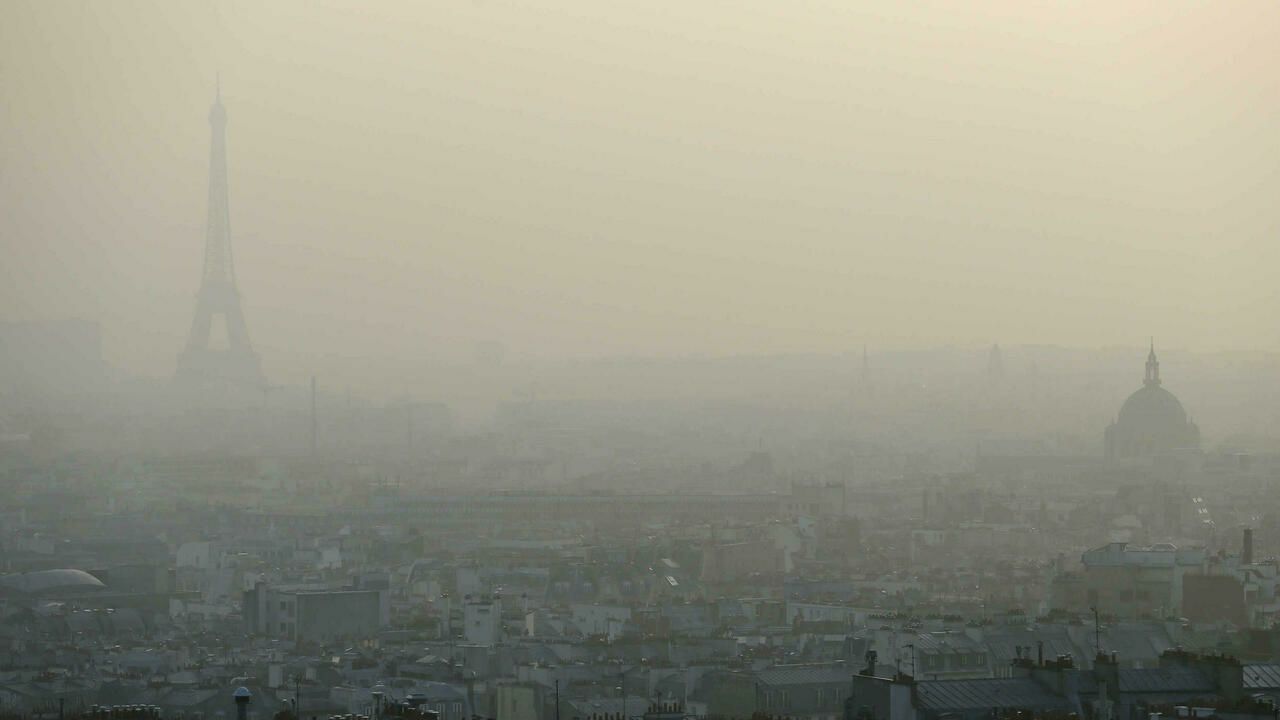
Environmental planning is also key factor that affects historical buildings preservation.
Environmental changes, especially climate change, make the protection tougher. The plenitude of the buildings is wooden structures, which are relatively more fragile than armored concrete buildings where we live.
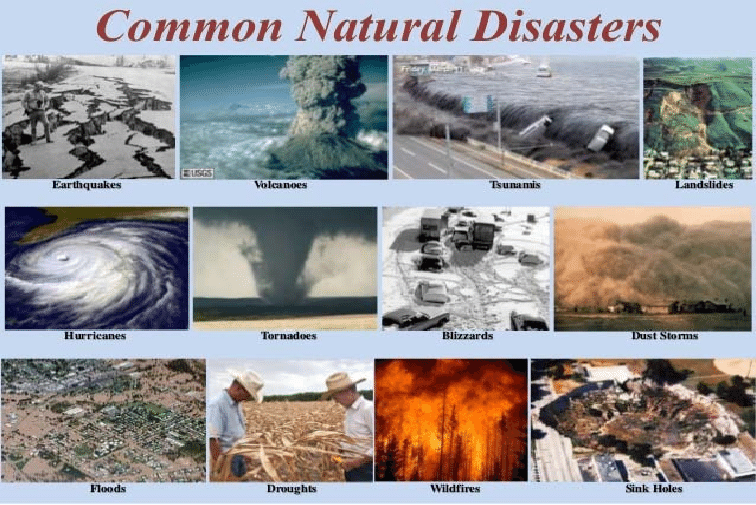
figure 9
figure 9
With climate change, the weather conditions are becoming more terrible. More extreme weather will happen all around the world, like floods, acid rain, even earthquakes, and tornadoes. The historical buildings cannot withstand these significant weather events. Sea level rising also causes historical buildings to lose their dominance.
Notre Dame of Paris has been severely influenced by climate change. The article “Weathering of materials at Notre Dame from changes in air pollution and climate in Paris, 1325–2090” published in the Journal of Cultural Heritage on July 10th, 2021, it suggests that Notre Dame de Paris was exposed to climate and pollution directly. The“ historical temperature, precipitation, and relative humidity and concentrations of key atmospheric pollutants SO2, NO2, O3 and PM10” all lead to buildings long term soiling, recession, and corrosion. The statistics information illustrates the effect of pollution in Notre Dame de Paris has begun around 1700, it notably increased after 1850. “Then most pollutant concentrations decreased through the latter half of the 20th century.” On the contrary, “Lead used as new roofing for Notre Dame can be mobilized, increasing heavy metal concentrations in the local environment.” (Brimblecombe&Lefèvre, 2021).

figure 10
figure 10
The European Union also starts their action. They funded a Research and Innovation program called Horizon 2020, which was dedicated to “increased resilience and sustainable reconstruction of historic areas to cope with climate change and risk events”( EC, n.d).
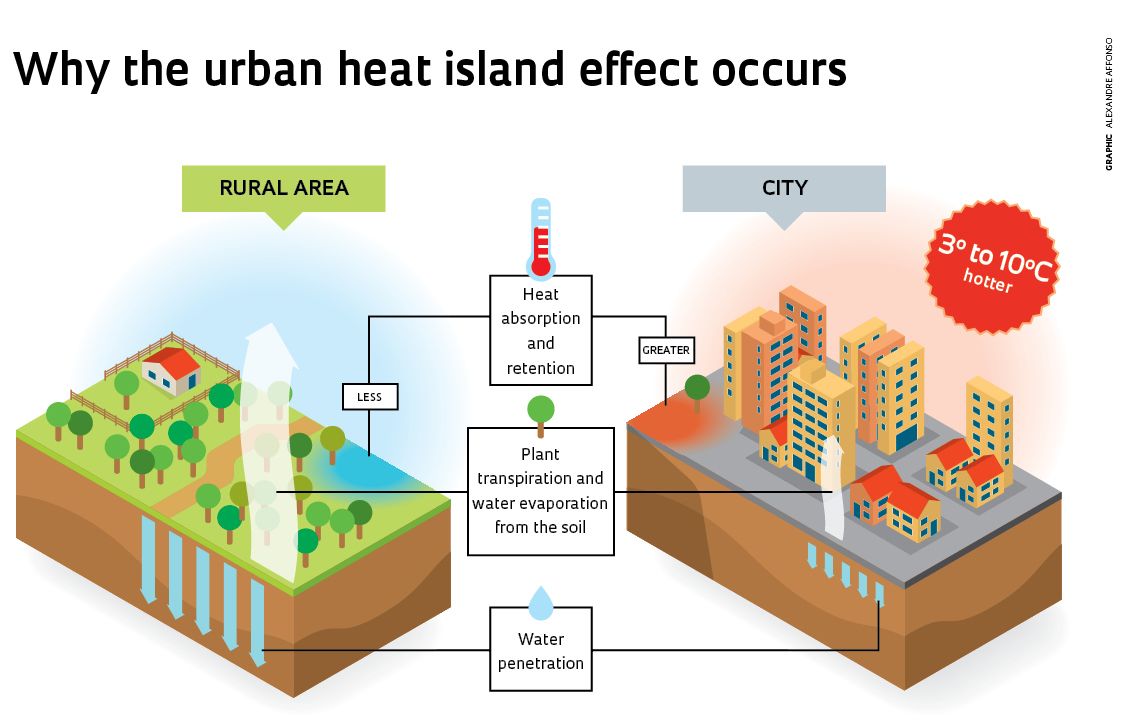
figure 11
figure 11
The urban heat island effect is another problem in historical building protection. “Urban heat islands occur when cities replace the natural land cover with dense concentrations of pavement, buildings, and other surfaces that absorb and retain heat” (EPA, n.d.). This effect may lead to several degrees Celsius temperature increases in the central area of the city. (picture)
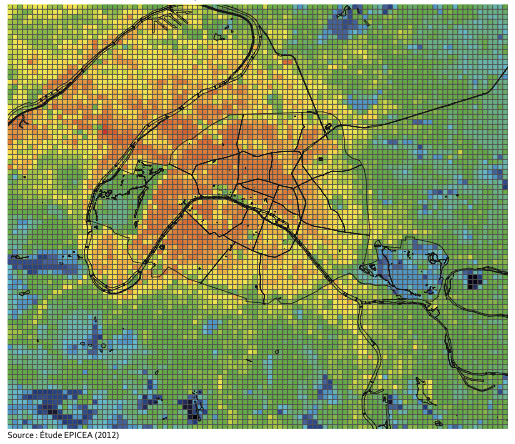
figure 12
figure 12
By using GIS technology, we can clearly notice that Paris' temperature was dramatically higher than the surrounding areas. Modern cities are mainly built around the historical sites of the city so that numerous historical sites and buildings are at the center of the metropolitan areas. As I mentioned before, a little temperature rise may lead to damage to the statues outside the buildings and their endurance. Scientists and maintenance officers need to pay close attention to this minor climate change.(Apur,2014)
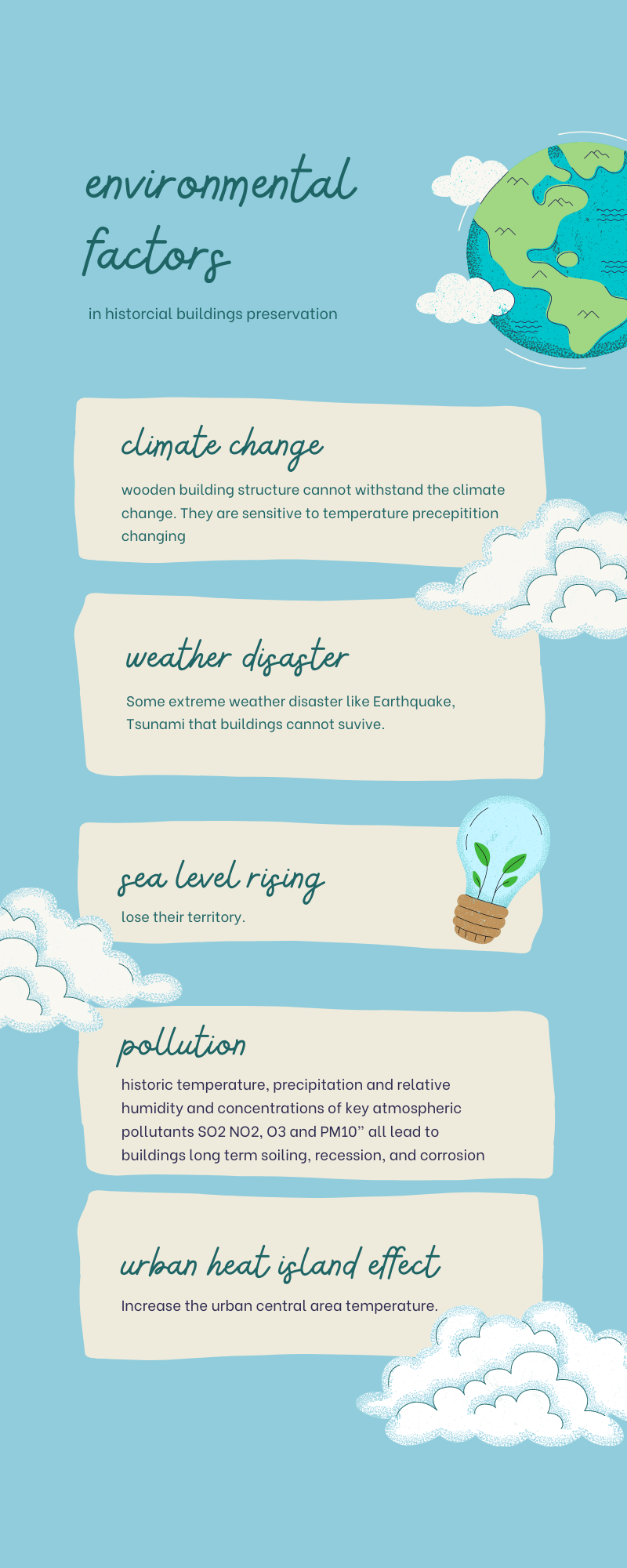
Made by Zhanchao Yang
Made by Zhanchao Yang
Urban Planning factors

Urban planning or urban design elements are vital to historical buildings protection.
There are several conflicts between the modern smart city and the older historical cities. Around the world, rapid urbanization has happened.
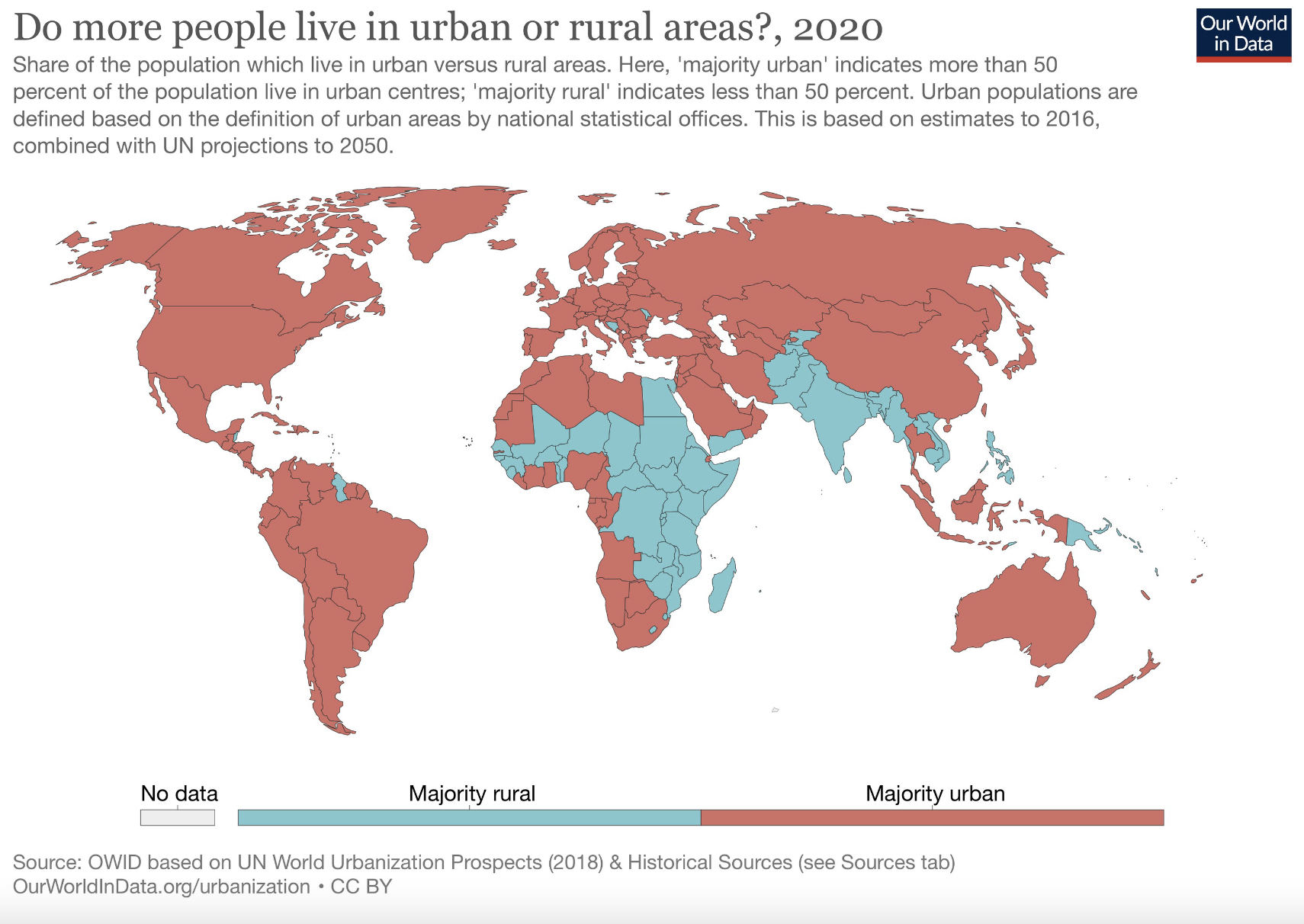
figure 13
figure 13
According to UN World Urbanization prospects results, in 2020, more than 50 percent of the world population is living in urban areas.(Ritchie & Roser, 2018) France has been highly industrialized. People from the rural areas sought job opportunities in the large metropolitan areas.
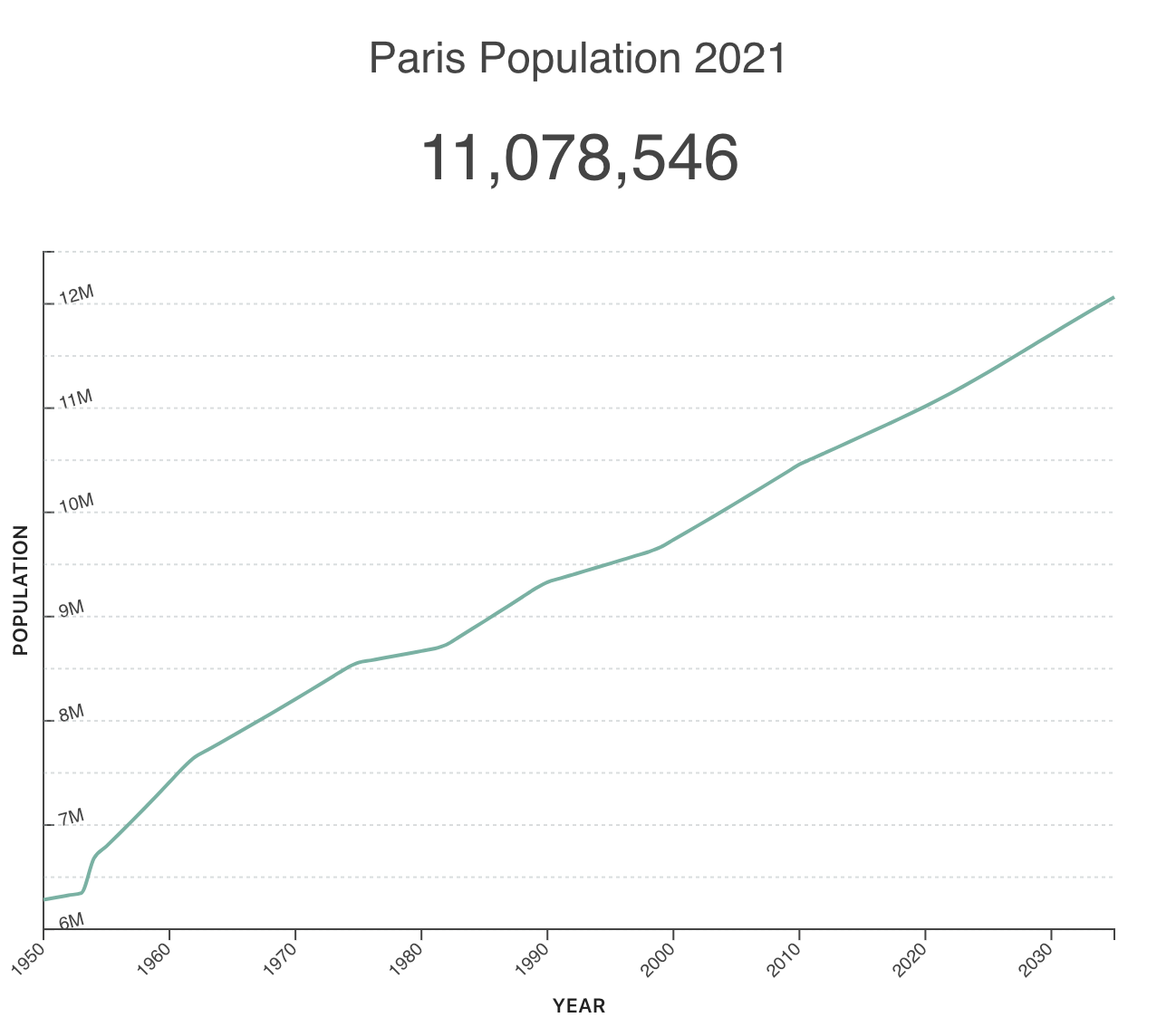
figure 14
figure 14
Paris with approximately 11 million people is known as one of the megacities in the world. According to scientific estimation, Paris' population will proceed to grow in the future few decades and will reach 12 million people by 2035. (Paris population, 2021)
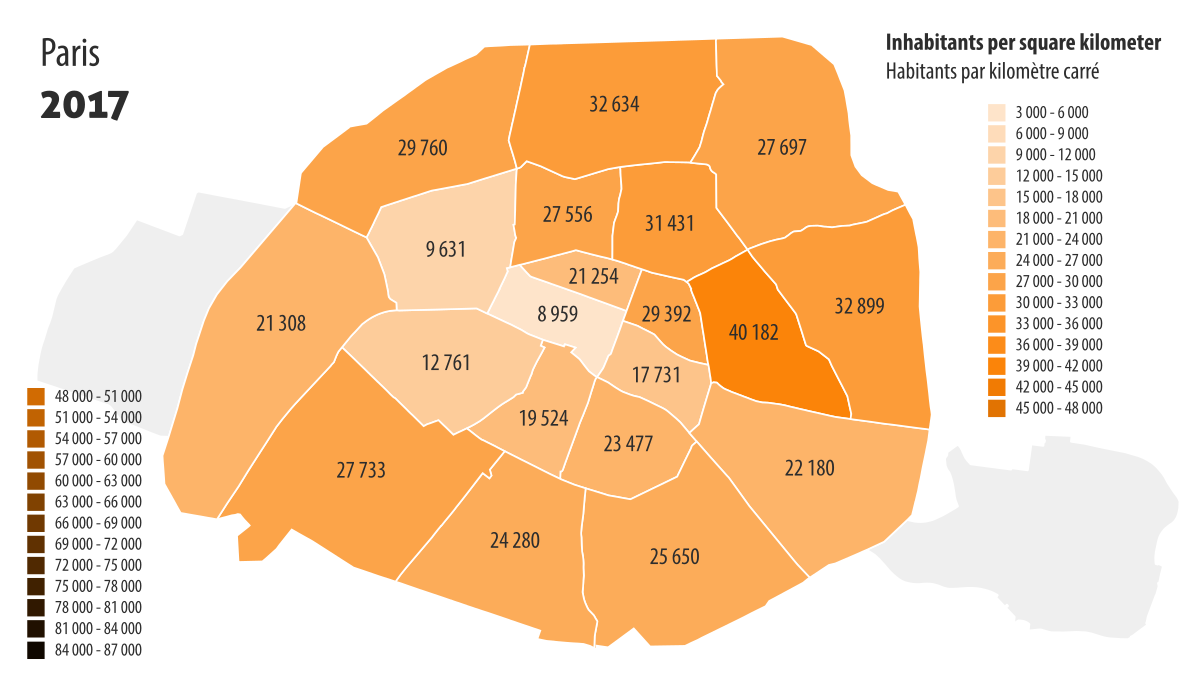
figure 15
figure 15
Today, the population density is approximately 20,300 inhabitants per square km. (Jeudy,2021) However, the population density of Broome County, NY is only 104 inhabitants per square km (census.gov,2020). Paris is 20 times denser than Broome County. In this way, you can see how dense the population is in Paris. The area of Paris has become limited. The government needs to construct high elevation buildings and convert more land area in this district for citizens to lodge. Most of the older sites concentrate on the mainstream of the city. Could we consider relocating the city's main area to the nearby countryside or rebuilding the old historical buildings in rural areas?
Furthermore, traffic or transportation has experienced dramatic changes in the last few centuries. Before the industrial revolution, no cars were invented all around the world. The people traveled by horse riding or foot so that most of the street was relatively narrower than today. Now, with new transportation invented, bus, the private car has occupied people’s mainly daily traveling. Consequently, the narrower streets no longer support the large stream of cars, especially during the morning and evening peaks on workdays. The heavy traffic makes inhabitants exhausted.

figure 16
figure 16
Subway, populous public transportation that would facilitate transportation efficiency and local economy, can cause severe negative effects on historical buildings and sites. According to the essay “Safe distance of cultural and historical buildings from subway lines” published in Soil Dynamics and Earthquake Engineering, it suggests that “Construction and operation of underground railway systems (metros/subways) in the historical sites have been one of the main concerns of the world heritage protection bodies such as UNESCO. There is a possibility of serious damages to the cultural and historical structures (CHS) by the metro induced vibrations.” Although scientists invented some graphs and models that try to minimize the influence by calculating the safe distance between the CHS and the subway line, there are still uncertainties because of “subway structural characteristics, properties of the surrounding soil media, and the type of CHSs on the vibrations received by the CHS” (Sadeghi, & Esmaeili, 2017).
In addition, people’s living style changed a lot in the last few centuries. From the hunter and gather, industrial revolution all the way to today, people’s daily life shifts dramatically. We began to go to work rather than hunting and gathering or self-sufficient agriculture. France experienced all these changes and Paris has witnessed these dramatic changes. With economic development, France gets into post-industrial status. Citizens care more about their health and fitness, such as air pollution, and balance between the green recreation park and living areas. The city need to be changed to accommodate people daily life necessities.
For example, if we still keep the Paris same as it one hundred years ago, although the old building are preserved, people definitely will suffer more severe problem like heavy traffic, crowded areas, and even homelessness etc. We need to find a balance point to solve these problems.
All of the above urban planning and environmental problems can be solved by the world's latest technology Geography Information System or GIS, which is “a spatial system that creates, manages, analyzes, and maps all types of data.”(Esri, n.d.). The GIS can help the scientists visualize all the scientific data to better understand the circumstances and identify the problems.

figure 17
figure 17
According to “The research on regional conservation planning of urban historical and cultural areas based on GIS” published at the IOP conference, it uses China's specific historical protection area as a case study. The method of their studies can be utilized in France and all over the world. “The technical methods of this study mainly rely on GIS, which can complete the fundamental work of each stage. "With the analytic hierarchy process (AHP), the comprehensive architectural value assessments can be calculated according to the investigation results." Based on the calculation results and visual corridor analysis, the precise range of protection region and construction control region can be decided and the specific protection measures can be formulated.”Because the historical sites are scattered in specific regions in the city or the province, they can use GIS technology to accurately categorize the city into first priority area, second priority area, etc. Remote sensing can accurately the data in specific towns or blocks to make the boundary line and send them to the construction organization. (Li et. al, 2017) At the same time, all the information about the town, like the height of the buildings, population density, traffic situation, are all going to be in the database and can be monitored simultaneously to avoid destruction. The database establishment is the groundwork of the whole process. Luckily, The European Union commission also established the GIS database to categorize all the historical buildings and their surrounding area. Also, they utilize GIS story maps to advertise the historical buildings to the public.
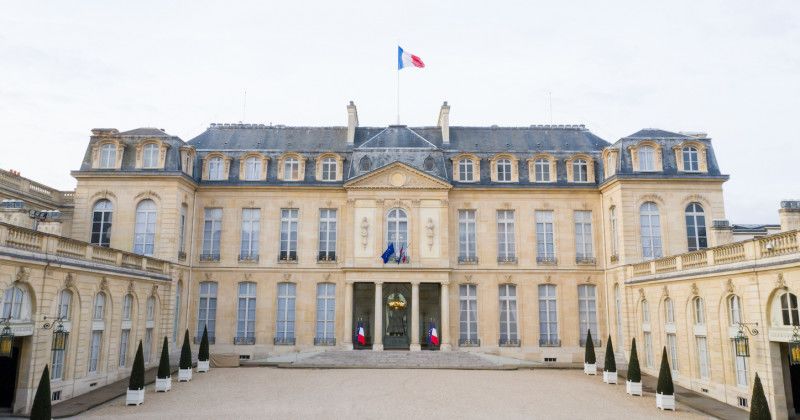
figure 18
figure 18
Last but not least, some historical buildings are being unitized by government agencies, loyalty, etc. Palais de l’Élysée is a great example. It used to belong to Louis XVIII, in 1816. Now, it is the president's residence in France, just like the White House in the United States.In this way, this brilliant building is still intact today. The Paris Observatory was built in 1667 proposed by the French academy of science, authorized by the France loyalty. It is still being used today.
Also, in my hometown Qingdao, China, it used to be colonized by the German regime in the early 20th century. But the police station, governor's palace, and procuratorate still are being used as their own function. The best of this protection method is that it utilizes the older buildings and makes them energetic and protects them at the same time.
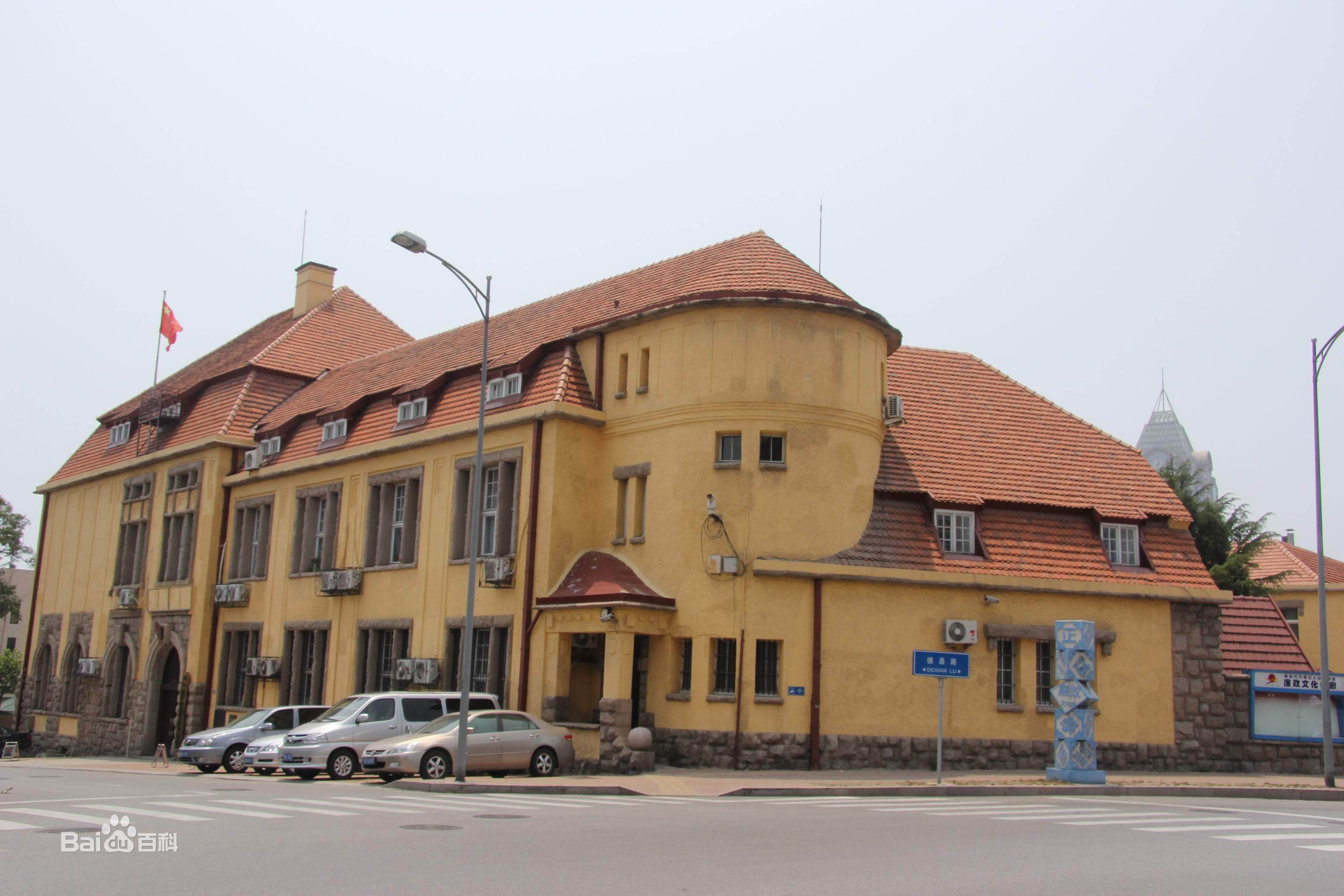
Taken by Zhanchao Yang
Taken by Zhanchao Yang
Law and Policy role
The law and policy provide guidelines for the historical sites and buildings.
First, regional laws and policies are essential guidelines of the historical site and building protection. France is a member of the European Union, so they should follow both the French law and European Union’s law.
From the European Union perspective, “Article 3(3) of the Treaty on European Union states that the Union shall 'ensure that Europe's cultural heritage is safeguarded and enhanced. The importance of cultural heritage is clearly recognized in the Treaty on the Functioning of the European Union (TFEU).” “Recently, successive EU presidencies have focused on various aspects of cultural heritage.” The European parliament started with a resolution on European cultural heritage in 1974, “the EP showed concern for the preservation of the cultural richness of Europe's heritage and the need for proper funding and education in this regard. It also pointed to legal and administrative barriers to the mobility of cultural heritage artifacts.” After that, successive supplement resolutions have been made until today, targeted on “stopping trafficking in artifacts illegally removed from archaeological sites, and to approach natural, architectural, urban and rural heritage as an indivisible whole” (Pasikowska-Schnass,2018). The EU also published a European framework for action on cultural heritage for public engagement. Also, the EU has decided to design 2018 as the European Year of Cultural Heritage. “Its aim was to encourage more people to find and engage with Europe's cultural heritage, and to reinforce a sense of belonging to a common European space.” (EC,n.d.)The law enforcement ensures the budget of protecting the historical buildings from a legislative perspective and persuades the public to engage the cultural heritage protection. Meanwhile, the European Commission also forms an expert group on preservation to give academic advice. We can notice that four major parts of the EU--EU commission, EU council, EU presidencies, and EP-- all pay attention to cultural heritage protection.
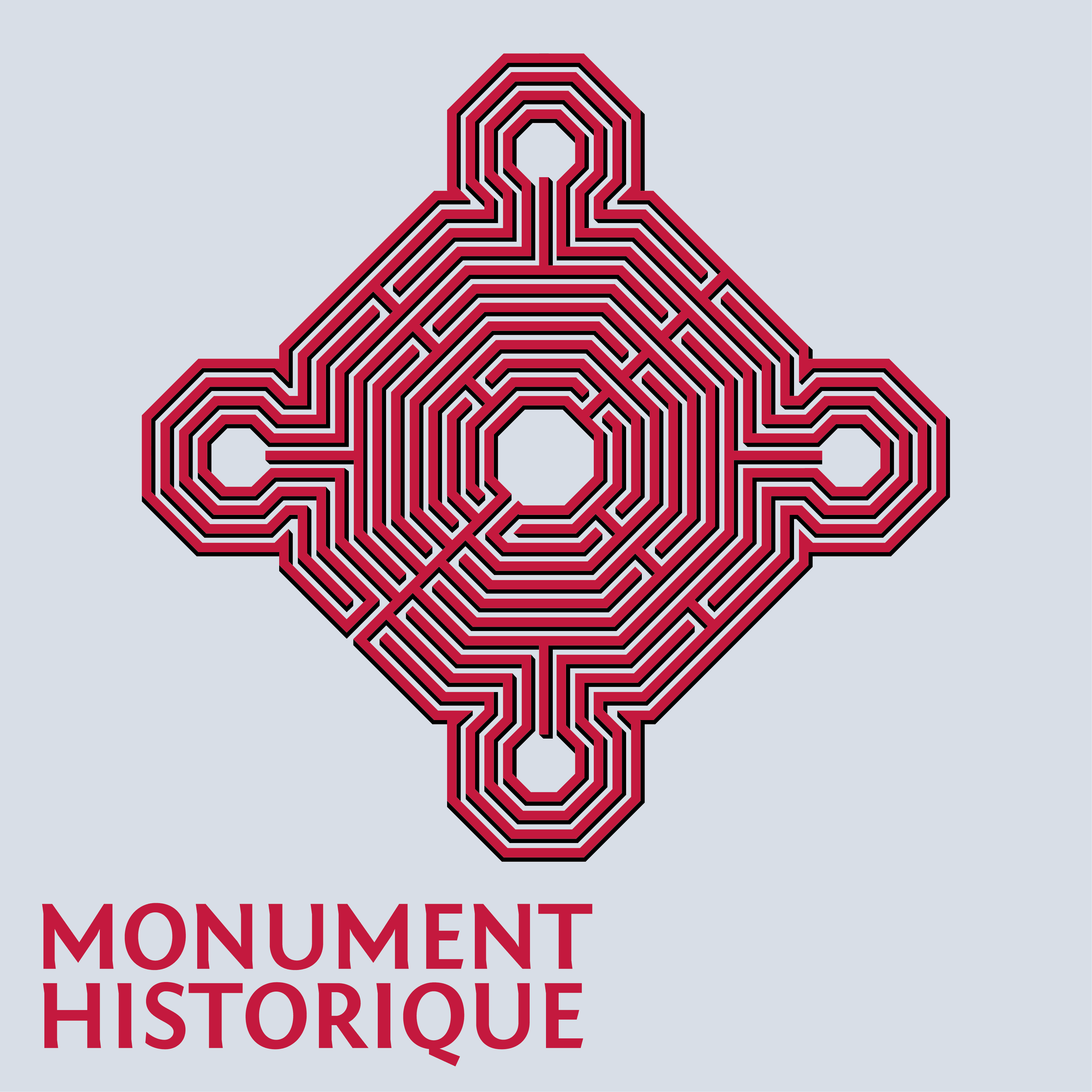
figure 19
figure 19
From the France country level, the historical site protection of France is one of the duties of the Ministère de la Culture (culture minister of France). Monuments historiques & sites patrimoniaux have the responsibility to protect all the historical sites in France. Monument Historique is one of the national programs held by the France cultural minister. It's designed to give some national heritage sites all around France, which include a building, a specific part of a building, a collection of buildings, a garden, a bridge, or other structures. No matter, it is private owned or not, as well as moving items. As of 2012, there were 44,236 monuments listed. These buildings are essential to France culture and architecture.". This system was created in 1819 and continues to be used until today. (Les Monuments Historiques, n.d.)Anyone who damages this item may face charges or prosecution.
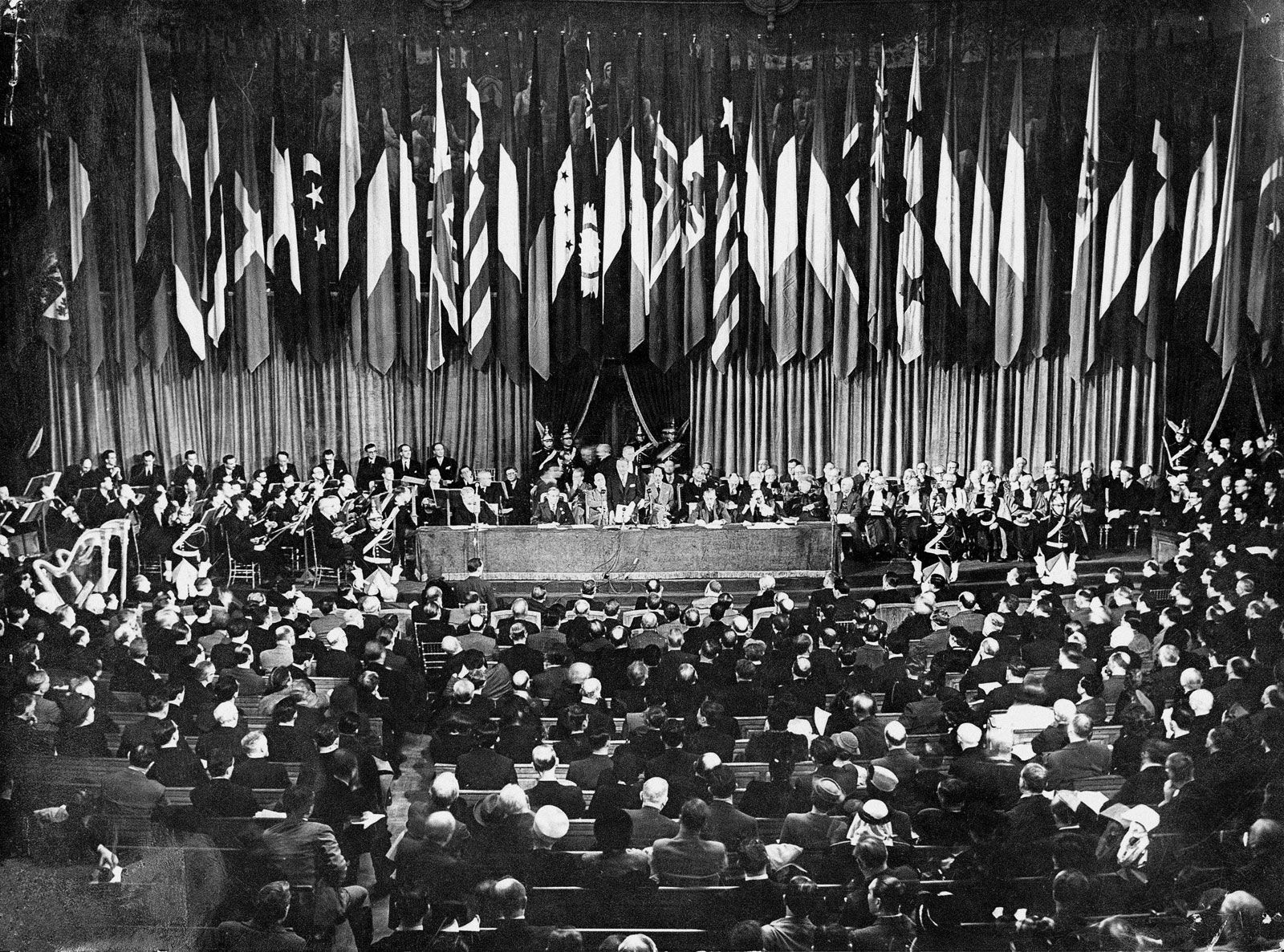
figure 20
figure 20
Second, the United Nations also provides international suggestions or policies for historical-cultural heritage protection all over the world. At The General Conference of the United Nations Educational, Scientific and Cultural Organization (UNESCO) meeting in Paris from 17 October to 21 November 1972, at its seventeenth session, the United Nations and numerous countries have noticed that many meaningful historical cultural heritage has been damaged due to multiple factors. (Meskell, 2014)The United Nations start to take action. It defined monuments as “architectural works, works of monumental sculpture and painting, elements or structures of an archaeological nature, inscriptions, cave dwellings and combinations of features, which are of outstanding universal value from the point of view of history, art or science;” group building as “groups of separate or connected buildings which, because of their architecture, their homogeneity or their place in the landscape, are of outstanding universal value from the point of view of history, art or science;” sites as “works of man or the combined works of nature and man, and areas including archaeological sites which are of outstanding universal value from the historical, aesthetic, ethnological or anthropological point of view.” These three items are all recognized as cultural heritage. (UNESCO,n.d.) On 24 March 2017, the United Nations Security Council unanimously adopted Resolution 2347, relating to the protection of cultural heritage. It makes out that the defense of cultural heritage is imperative for security. The majority of the countries in the world have recognized the resolution and followed this policy.(UNESCO,2017)
Media role

The media and the internet are significant in persuading people to preserve historical sites.
Traditionally, the paper media like the national Geographic magazines, Lonely Planet magazines, write several articles to grab people's attention on historical heritage protection. Some travel magazines make top travel lists to let more people know what historical buildings are spread all over the world. When people move around, they will notice what the buildings look like, and their history.
“Most recently, the use of ‘social media’ provides a new arena for the evolution of the role of the media in assisting the archaeological community in calling the public’s attention to the need to understand, conserve, protect, and document the cultural heritage of the people of all nations.”(Eck, 2014)
Nowadays, some YouTubers and other social media platforms have lots of videos to introduce historical buildings.
Also, the media can provide oversight the government officials and relevant associations. They can receive public notification and problems that the public report and follow up in order to better protect themselves.
Lately, with the covid-19 pandemic, widespread, it’s heavily restricted people travel around the world. The Chinese Great Wall cooperated with Google to develop an App to help people virtually visit ancient sites.
Protection Method

Let's bring all these theories into practice, how to preserve the historical buildings from microlevel--protection methods focused on specific sites.
The most common way to protect historical sites is to renovate and rebuild. The regular check is the procedure the government or response companies most commonly use. When they regularly check the buildings and find something broken, they will try to renovate the building's broken areas and prevent it from becoming a big one. If the buildings or sites are damaged seriously, we will try to rebuild them. During the rebuild procedure, the expert and the architecture officers will try their best to mimic the original buildings. They will try their best to find the materials from the original one.
From the Notre Dame de Paris rebuild case, we can clearly know that the rebuild operation is pretty complicated. The expertise needs to identify what has been damaged in the disaster at first. Then, gather the damaged materials and analysis where that material was located before, and try to integrate that material in the original buildings. This procedure needs expertise from archaeology and architecture cooperation and may take prolonged period of time.
Secondly, controlling the daily visitor number is an effective way to make the historical buildings sustainable so that our future generations can still witness their ancestry and extraordinary artifacts. The administration of historic buildings can through ticket reservation or make appointments on their website to check the daily traveler member under the maximum capacity.
Last but not least, some latest technology like GIS- remote sensing and laser scan also have a decisive position in historical building preservation. Laser scanning is the controlled deflection of laser beams, visible or invisible. (Marshall,2004) It can be linked with the GIS technology to get accurate data of the historical buildings and structures. Using 3-D printing to make the models and used in rebuilding the historical sites. Remote sensing is even more precise. The article published on 26th International CIPA Symposium 2017, illustrates a Virtual Reality, Immersive Model of Armagh Observatory role in learning the historical buildings and even replicate it in the computer system. It can be used for educational or future virtual traveling purposes. (Murphy et. al, 2017)
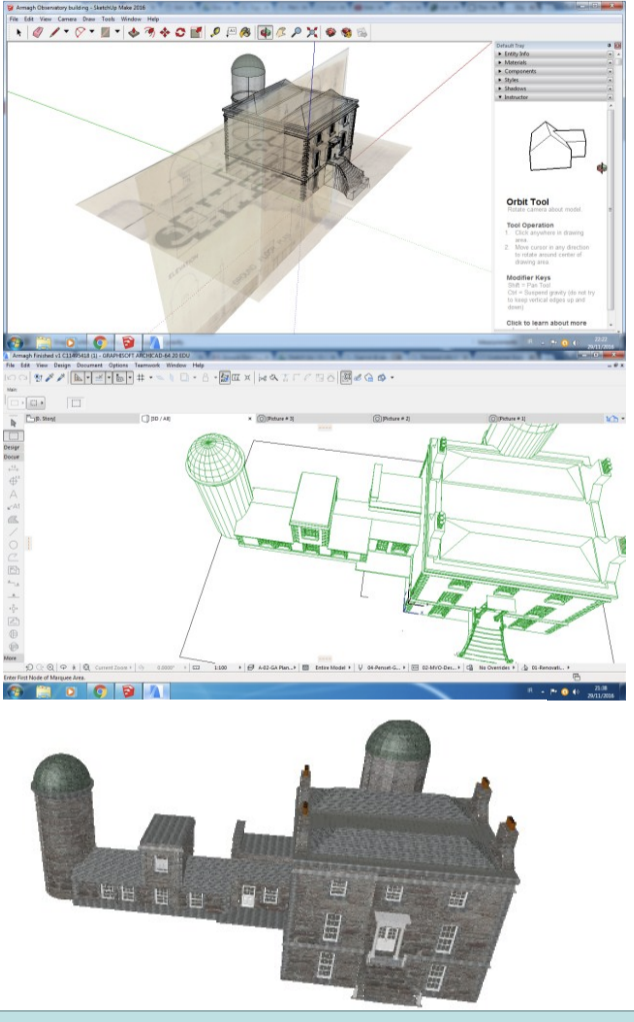
figure 21
figure 21
What can we do to protect the historical buildings? As the old saying goes “Brothers of one mind can cut through gold”, which means if we all put the effort into something, we will make some difference. We need to respect our ancestry effort, so be a civilized traveler. When we go into the historical, sites follow the administrative establishment and policy, avoiding drawing engraving of the historical buildings. Besides, we can make some donations, like one dollar per month. It won’t damage your quality of life, but if you persist for several decades, this small effort will lead to a huge influence. We can persuade our surroundings and try to influence them. Also, we can use our vote to support the further legislation of the historical building protection.
Organization focus on preserving historical buildings
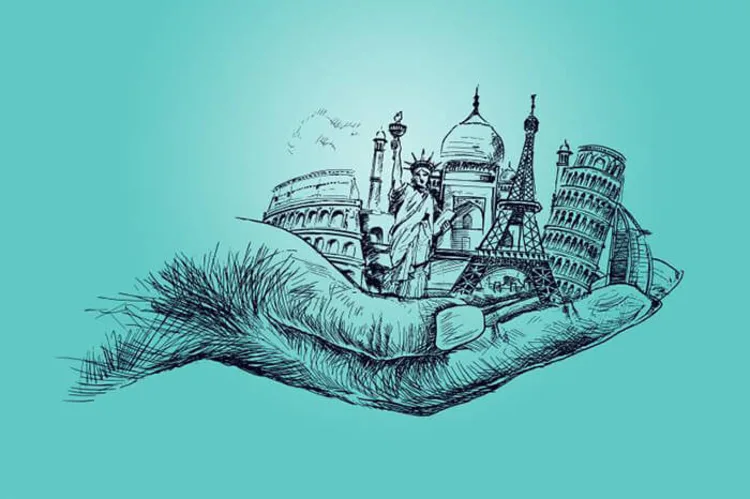
There are several organizations dedicated to preserving the cultural heritage, especially the historical buildings and sites.
Some regional foundations or organizations focus on France’s historical protection, like “French Heritage Society”. “French Heritage Society is an American non-profit organization created in 1982 that includes 10 chapters in the US and one in France.” They are dedicated “ to ensure that the treasures of our shared French architectural and cultural heritage survive to inspire future generations to build, dream, and create.” They hold frequent activities like traveling, education programs, and donation dinners to help protect the historical buildings and even help facilitate the US and French relationship and cultural exchange. Now, these foundations help to restore 601 projects and have 509 students and 461 members, and get 13,205,524 dollar funds in historical sites protection. (French Heritage Society, n.d.)
From the European aspect, HEREIN is a "European Cultural Heritage Information Network developed within the Council of Europe, which brings together European public administrations in charge of national cultural heritage policies and schemes to form a unique cooperation network in the domain of Cultural Heritage."(Petti & Trillo, 2020)
Europa Nostra acts as a relay between civil society and EU institutions, "advocating mainstream heritage EU policies and securing adequate funding, as well as actively contributing to the EU policy debate and policy making process. "And it works closely with international constitutional partners.(Europa Nostra,n.d)
Furthermore, there are several non-profit organizations that focus on historical preservation all around the world. The UNESCO World Heritage center is well-known. It’s a section under the UNESCO and United Nations.
Plus, ICOMOS (International Council on Monuments and Sites) is the only non-governmental organization of this kind. “Which is dedicated to promoting the application of theory, methodology, and scientific techniques to the conservation of the architectural and archaeological heritage. ICOMOS is a network of experts that benefits from the interdisciplinary exchange of its members, among which are architects, historians, archaeologists, art historians, geographers, anthropologists, engineers, and town planners.” (ICOMS, n.d.) It’s from the academic aspects to improve the preservation of heritage and make standards and techniques for each kind of protection.

From French heritage society.(2020, May 1). French Heritage Society. Retrieved November 29, 2021, from https://frenchheritagesociety.org/.
From French heritage society.(2020, May 1). French Heritage Society. Retrieved November 29, 2021, from https://frenchheritagesociety.org/.

Homepage. Herein System. (n.d.). Retrieved December 3, 2021, from https://www.coe.int/en/web/herein-system.
Homepage. Herein System. (n.d.). Retrieved December 3, 2021, from https://www.coe.int/en/web/herein-system.

From Europa Nostra. (n.d.). Homepage.Retrieved November 29, 2021, from https://www.europanostra.org/.
From Europa Nostra. (n.d.). Homepage.Retrieved November 29, 2021, from https://www.europanostra.org/.
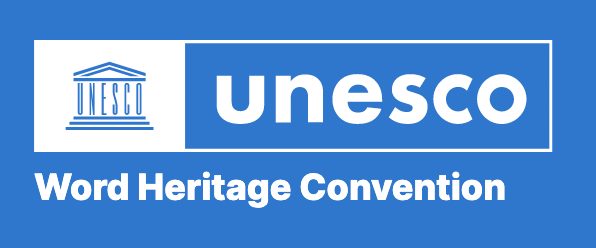
From UNESCO (n.d.). Convention concerning the protection of the world cultural and natural heritage. UNESCO World Heritage Centre. Retrieved November 30, 2021, from https://whc.unesco.org/en/conventiontext/.
From UNESCO (n.d.). Convention concerning the protection of the world cultural and natural heritage. UNESCO World Heritage Centre. Retrieved November 30, 2021, from https://whc.unesco.org/en/conventiontext/.

From ICOMOS. (n.d.). ICOMOS' mission. ICOMOS Mission - International Council on Monuments and Sites. Retrieved December 2, 2021, from https://www.icomos.org/en/about-icomos/mission-and-vision/icomos-mission.
From ICOMOS. (n.d.). ICOMOS' mission. ICOMOS Mission - International Council on Monuments and Sites. Retrieved December 2, 2021, from https://www.icomos.org/en/about-icomos/mission-and-vision/icomos-mission.

made by Zhanchao Yang
made by Zhanchao Yang
In conclusion, economic factors, like government budget, donation, and some method to transfer the cultural heritage into private companies, are the essential for all the protection procedures. Without money, we cannot protect the historical buildings.
Urban planning and environmental planning is a kind of area closely related to preservation of the historical buildings. All the buildings and sites were built within the cities and our living environment. With urbanization, pollution and people's daily living habits changing, all these buildings are under threat. However, we can use the latest planning method to renovate our city and provide specific ways to solve environmental problems.
Law and policy are the guidelines for preservation. It ensures the government budget from the legislation level. They enforce the army or other entities to protect the historical buildings. Anyone obeying the protection law will face punishment or prosecution.
The Media introduced more buildings to grab public attention, to let them realize the value of historical buildings and provide supervision to government and other agencies to pay close attention to potential safety bugs.
I believe if everyone in the world spends a small effort on it, like donating 1 dollar monthly or even yearly, we can make the changes of the world. We should ensure that our future generation can still see the most historical and valuable buildings in the world.
Reference
Apur (2014), Les îlots de chaleur urbains à Paris, cahier#1
Bady, Jean-Pierre (1998). Les Monuments historiques en France. Presses Universitaires de France. p. 26
Brimblecombe, P., & Lefèvre, R.-A. (2021). Weathering of materials at Notre-Dame from changes in air pollution and climate in Paris, 1325–2090. Journal of Cultural Heritage, 50, 88–94. https://doi.org/10.1016/j.culher.2021.06.007
Cohen, N. (2013). Urban planning conservation and preservation . McGraw-Hill.
Cha, A. E. (2012, July 2). Europe turns to private hands to preserve its treasures amid the financial crisis. The Washington Post. Retrieved from https://www.washingtonpost.com/business/economy/europe-turns-to-private-hands-to-preserve-its-treasures-amid-financial-crisis/2012/07/02/gJQAtNPPJW_story.html.
Cuddy, A. & Boelpaep, B. (2019, April 24). Notre-Dame Fire: Has too much money been given to rebuild it? BBC News. Retrieved from https://www.bbc.com/news/world-europe-48039770.
Darwish, M. A. (2019). The role of new media in the protection of cultural properties and heritage. International Journal of Cultural Inheritance & Social Sciences (IJCISS), 1(1), 135–149.
Eck C.R. (2014) Preserving Heritage: The Role of the Media. In: Smith C. (eds) Encyclopedia of Global Archaeology. Springer, New York, NY. https://doi.org/10.1007/978-1-4419-0465-2_394
EC. (n.d.). European Year of cultural heritage 2018. Culture and Creativity. Retrieved from https://ec.europa.eu/culture/cultural-heritage/eu-policy-for-cultural-heritage/european-year-of-cultural-heritage-2018.
EC. (n.d.). Sustainability and Cultural Heritage. Culture and Creativity. Retrieved from https://ec.europa.eu/culture/cultural-heritage/cultural-heritage-in-eu-policies/sustainability-and-cultural-heritage.
ESRI. (n.d.). What is GIS? Geographic Information System Mapping Technology. Retrieved from https://www.esri.com/en-us/what-is-gis/overview.
Environmental Protection Agency. (n.d.). Reduce Urban Heat Island Effect. EPA. Retrieved from https://www.epa.gov/green-infrastructure/reduce-urban-heat-island-effect.
Europa Nostra. (n.d.). Homepage.Retrieved from https://www.europanostra.org/.
Europa Nostra. (n.d.). Homepage. European Heritage Awards / Europa Nostra Awards. Retrieved from https://www.europeanheritageawards.eu/.
EU. (n.d.). Expert group on cultural heritage. Culture and Creativity. Retrieved from https://ec.europa.eu/culture/cultural-heritage/eu-policy-for-cultural-heritage/expert-group-on-cultural-heritage.
France cultural minister. (2021, September 22). On Wednesday 22 September, Roselyne Bachelot-Narquin, Minister of Culture, presented her Ministry's draft budget for 2022, as it stands... Retrieved from https://www.culture.gouv.fr/en/Presse/Communiques-de-presse/Roselyne-Bachelot-Narquin-ministre-de-la-Culture-a-presente-ce-mercredi-22-septembre-le-projet-de-budget-de-son-ministere-pour-2022-tel-qu-il-se.
French heritage society.(2020, May 1). French Heritage Society. Retrieved from https://frenchheritagesociety.org/.
Gerald F. M.(2004) Handbook of Optical and Laser Scanning, Marcel Dekker, Inc. ISBN 0-8247-5569-3
ICOMOS. (n.d.). ICOMOS' mission. ICOMOS Mission - International Council on Monuments and Sites. Retrieved from https://www.icomos.org/en/about-icomos/mission-and-vision/icomos-mission.
Jeudy, L. (2021, July 5). France: Population density of Paris region by department 2018. Statista. Retrieved from https://www.statista.com/statistics/1047176/population-density-ile-de-france-paris-region-by-department-france/.
Les Monuments Historiques. Ministère de la culture. (n.d.). Retrieved from https://www.culture.gouv.fr/Thematiques/Monuments-Sites/Monuments-historiques-sites-patrimoniaux/Les-monuments-historiques.
Li, S., Xu, J., & Li, Q. (2017). The research on regional conservation planning of urban historical and cultural areas based on GIS. IOP Conference Series. Earth and Environmental Science, 69(1), 12006–. https://doi.org/10.1088/1755-1315/69/1/012006
Meskell, L. (2014). States of conservation: protection, politics, and pacting within UNESCO's world heritage committee. Anthropological Quarterly, 87(1), 217+. https://link.gale.com/apps/doc/A358314873/AONE?u=nysl_oweb&sid=bookmark-AONE&xid=56c8eb06
M. Murphy, A. Chenaux, G. Keenaghan, V. GIbson, J. Butler, & C. Pybusr. (2017). ARMAGH OBSERVATORY – HISTORIC BUILDING INFORMATION MODELLING FOR VIRTUAL LEARNING IN BUILDING CONSERVATION. International Archives of the Photogrammetry, Remote Sensing and Spatial Information Sciences., XLII-2-W5, 531–538.
OECD (2008), The Impact of Culture on Tourism, OECD Publishing, Paris, https://doi.org/10.1787/9789264040731-en
Pasikowska-Schnass, M. (2018, June). Cultural Heritage in EU policies - european parliament. europarl.europa.eu. Retrieved from https://www.europarl.europa.eu/RegData/etudes/BRIE/2018/621876/EPRS_BRI(2018)621876_EN.pdf.
Paris population 2021. Paris Population 2021 (Demographics, Maps, Graphs). (n.d.). Retrieved from https://worldpopulationreview.com/world-cities/paris-population.
Petti L, Trillo C, Makore BN. Cultural Heritage and Sustainable Development Targets: A
Possible Harmonisation? Insights from the European Perspective. Sustainability. 2020; 12(3):926. https://doi.org/10.3390/su12030926
Person, E. C. & U. N. E. S. C. O. (2021, April 27). Explore natura 2000. ArcGIS StoryMaps. Retrieved from https://storymaps.arcgis.com/collections/387dee62de3c482e9c6bbf03a0906c34?item=1.
Roellinger, M. (2014). Centenary of the French Law on historic monuments. Art Antiquity & Law, 19(4), 327+. https://link.gale.com/apps/doc/A405021956/AONE?u=nysl_oweb&sid=googleScholar&xid=89c40e2c
Ritchie H. and Roser M. (2018) - "Urbanization". Published online at OurWorldInData.org. Retrieved from: 'https://ourworldindata.org/urbanization'
Sadeghi M. & Esmaeili H. (2017). Safe distance of cultural and historical buildings from subway lines. Soil Dynamics and Earthquake Engineering (1984), 96, 89–103. https://doi.org/10.1016/j.soildyn.2017.02.008
Serageldin, I., Shluger, E., & Martin-Brown, J. (2001). Historic cities and sacred sites : cultural roots for urban futures . World Bank.
Wu, Muccari, J. R. (2019, April 22). Notre Dame Fire: What was damaged. NBCNews.com. Retrieved from https://www.nbcnews.com/news/world/notre-dame-fire-what-was-damaged-n995371.
Winners of 2011 EU Prize for Cultural Heritage / Europa Nostra Awards announced. European Commission - European Commission. (2011, April 7). Retrieved from https://ec.europa.eu/commission/presscorner/detail/en/IP_11_443.
UN Security Council adopts historic resolution for the protection of Heritage. UNESCO. (2017, April 3). Retrieved from https://en.unesco.org/news/security-council-adopts-historic-resolution-protection-heritage.
UNESCO (n.d.). Convention concerning the protection of the world cultural and natural heritage. UNESCO World Heritage Centre. Retrieved from https://whc.unesco.org/en/conventiontext/.
media reference
Figure 1: McAuley, J. (2020, July 10). Notre Dame to be rebuilt as it was before the fire, French government says. The Washington Post. Retrieved from https://www.washingtonpost.com/world/notre-dame-to-be-rebuilt-as-it-was-before-the-fire-french-government-says/2020/07/09/f28eafba-c215-11ea-8908-68a2b9eae9e0_story.html.
Figure 2: Selkirk, A., & Seguin, G. (2019, June 4). 10 best things to do in Pompeii. Julia's Album. Retrieved from https://juliasalbum.com/things-to-do-in-pompeii/.
Figure 3: Caen - rue de Bayeux - Carte postale ancienne et vue d'hier et aujourd'hui. Geneanet. (n.d.). Retrieved from https://www.geneanet.org/cartes-postales/view/27506#0.
Figure 4: Wu, Muccari, J. R. (2019, April 22). Notre Dame Fire: What was damaged. NBCNews.com. Retrieved from https://www.nbcnews.com/news/world/notre-dame-fire-what-was-damaged-n995371.
Figure 5: Hafner, J. (2019, April 17). Notre Dame Fire: Why the cathedral in Paris is an architectural icon. USA Today. Retrieved from https://www.usatoday.com/story/news/world/2019/04/16/notre-dame-cathedral-architecture-french-gothic-style-explained/3476359002/.
Figure 6: Wu, Muccari, J. R. (2019, April 22). Notre Dame Fire: What was damaged. NBCNews.com. Retrieved from https://www.nbcnews.com/news/world/notre-dame-fire-what-was-damaged-n995371.
Figure 7: ESPON. (2020, June 4). Working Paper "Measuring economic impact of cultural heritage at territorial level". ESPON. Retrieved from https://www.espon.eu/working-paper-cultural-heritage.
Figure 8:Bari, S. (2021, February 11). 5+ best plugins to accept donations with WordPress. WPExplorer. Retrieved from https://www.wpexplorer.com/donation-wordpress-plugins/.
Figure 9: Saha, Auddy, S., Pal, S., Kumar, S., Pandey, S., Singh, R., Singh, A. K., Banerjee, S., Ghosh, D., & Saha, S. (2017). Disaster management using Internet of Things. 2017 8th Annual Industrial Automation and Electromechanical Engineering Conference (IEMECON), 81–85. https://doi.org/10.1109/IEMECON.2017.8079566
Figure 10: EU / horizon 2020 / EACEA - SARECO. (n.d.). Retrieved from https://www.sareco.org/institution/horizon-2020/.
Figure 11: Architects , J. (2018, October 14). How landscape architecture mitigates the urban heat island effect. Land8. Retrieved from https://land8.com/how-landscape-architecture-mitigates-the-urban-heat-island-effect/.
Figure 12: Apur (2014), Les îlots de chaleur urbains à Paris, cahier#1
Figure 13: Ritchie H. and Roser M. (2018) - "Urbanization". Published online at OurWorldInData.org. Retrieved from: 'https://ourworldindata.org/urbanization'
Figure 14: Paris Population 2021 (Demographics, Maps, Graphs). (n.d.). Retrieved from https://worldpopulationreview.com/world-cities/paris-population.
Figure 15: Population density of Paris, 2017 - INSEE
Figure 16: Pikepictur. (2017, March 5). Metro map subway map design template vector image on VectorStock. VectorStock. Retrieved December 11, 2021, from https://www.vectorstock.com/royalty-free-vector/metro-map-subway-map-design-template-vector-13466184.
Figure 17: ESRI. (n.d.). What is GIS? Geographic Information System Mapping Technology. Retrieved from https://www.esri.com/en-us/what-is-gis/overview.
Figure 18: Sawe, B. E. (2019, August 6). Where does the president of france live? WorldAtlas. Retrieved from https://www.worldatlas.com/articles/where-does-the-president-of-france-live.html.
Figure 19: Les Monuments Historiques. Ministère de la culture. (n.d.). Retrieved from https://www.culture.gouv.fr/Thematiques/Monuments-Sites/Monuments-historiques-sites-patrimoniaux/Les-monuments-historiques.
Figure 20: Encyclopædia Britannica. (n.d.). Unesco: first General Conference. Encyclopædia Britannica. Retrieved from https://www.britannica.com/topic/UNESCO#/media/1/616410/150384.
Figure 21: M. Murphy, A. Chenaux, G. Keenaghan, V. GIbson, J. Butler, & C. Pybusr. (2017). ARMAGH OBSERVATORY – HISTORIC BUILDING INFORMATION MODELLING FOR VIRTUAL LEARNING IN BUILDING CONSERVATION. International Archives of the Photogrammetry, Remote Sensing and Spatial Information Sciences., XLII-2-W5, 531–538.
Background figure 1: Guardian News and Media. (2021, January 10). Paris agrees to turn Champs-élysées into 'extraordinary garden'. The Guardian. Retrieved from https://www.theguardian.com/world/2021/jan/10/paris-approves-plan-to-turn-champs-elysees-into-extraordinary-garden-anne-hidalgo.
Background figure 2: Hoben, N. (2020, February 13). 5 great value proposition examples & why they work. Search Engine Journal. Retrieved from https://www.searchenginejournal.com/value-propositions-examples/306327/.
Background figure 3: Hire, C., & Meyer, S. (2019, October 15). 10 ways to make your city wealthier - chris hire. Municipal World. Retrieved from https://www.municipalworld.com/feature-story/10-ways-to-make-your-city-wealthier/.
Background figure 4: MALYKHINA, L. (2015, March 20). Paris briefly Tops World charts for Air Pollution. France 24. Retrieved from https://www.france24.com/en/20150320-paris-city-smog-pollution-plume-labs-hidalgo-public-transport-diesel.
Background figure 5: Rethinking Urban Planning in a post Covid World. WSPglobal. (2020, June 25). Retrieved from https://www.wsp.com/en-PH/insights/rethinking-urban-planning-in-a-post-covid-world.
Background figure 6: NCA assessment policy update for Australian law school students. OzTREKK. (2021, July 5). Retrieved from https://oztrekk.com/news/nca-assessment-policy-update-for-australian-law-school-students/.
Background figure 7: Evans, J. (2019, December 3). Mass media vs. Social Media. TechCrunch. Retrieved from https://techcrunch.com/2019/12/02/mass-media-vs-social-media/.
Background figure 8: Holland, O. (2020, April 15). A year after the blaze, Notre Dame's rebuild is on hold due to coronavirus. CNN. Retrieved from https://www.cnn.com/style/article/notre-dame-cathedral-fire-anniversary-rebuild/index.html.
Background figure 9: Adkuloo, N. (2021, November 19). On World Heritage Day, visit your favourite UNESCO world heritage site. TravelTriangle. Retrieved from https://traveltriangle.com/blog/world-heritage-day-2022/.
Background figure 10: Chepkemoi, J. (2017, April 25). UNESCO World Heritage Sites in France. WorldAtlas. Retrieved from https://www.worldatlas.com/articles/unesco-world-heritage-sites-in-france.html.
Video 1: Lonely Planet (2013, Feb 22) "Paris city guide- Lonely Planet travel video" Youtube video 3:12 https://www.youtube.com/watch?v=5XYUHJ13KHM&t=1s
Video 2: Khey Pard (2018, Feb 28) "The History of France : Every Year" Youtube video 5:02 https://www.youtube.com/watch?v=8XC0qHOkIxg
Video 3: Europa Nostra (2021, Nov 18) "European Heritage Awards / Europa Nostra Awards 2022 - Call for Entries" Youtube video 0:54 https://www.youtube.com/watch?v=5iWMOyQ-IaY
Video 4: Swanson, J. (2017, Sep 27) "How To Visit the Louvre Quickly and Efficiently?" Youtube video 18:19 https://www.youtube.com/watch?v=PNjuSMSy9MU
Video 5: ABC News (2021, Feb 16) "Rebuilding Paris’ Notre Dame Cathedral" Youtube video 5:00 https://www.youtube.com/watch?v=1P5JDfelKPc
Video 6: UNESCO (2019, Jul 26) "World Heritage explained - animated short about the UNESCO World Heritage Convention (English)" Youtube video 2:08 https://www.youtube.com/watch?v=lOzxUVCCSug&t=112s
Video 7: ICOMOS (2015, Jun 4) "ICOMOS 1965-2015" Youtube Video 5:22 https://www.youtube.com/watch?v=yOaX8ZStWB8
Thank You for watching
Zhanchao Yang
SUNY-state university of New York at Binghamton
GLST minor Capstone
